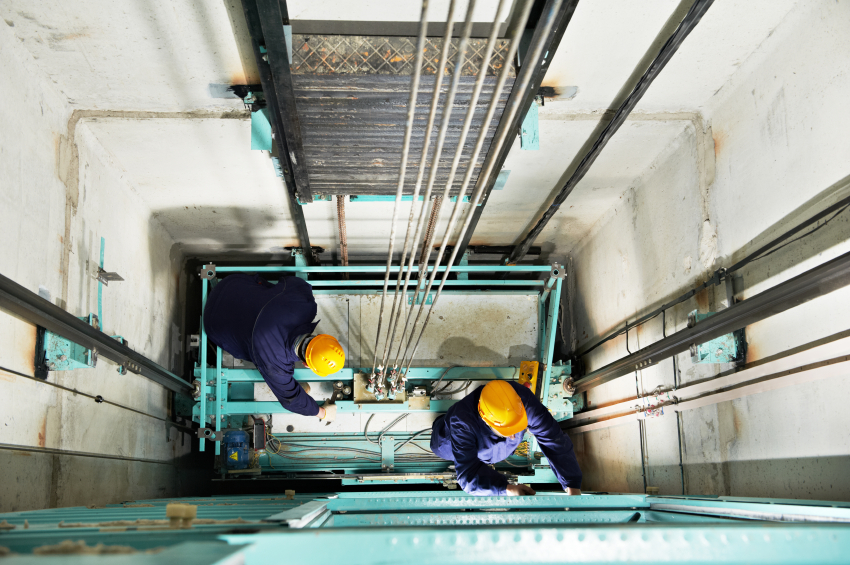The Science of Lifts
Contents |
[edit] How do Lifts Work?
A lift uses physical mechanisms that work together to lift or lower a car to various floors. The key components of a lift system include one or more car, a counterweight, an electric motor, metal cables, and various security systems.
Each part plays a particularly important part in the role of a lift system, and there are a lot of physical principles that are considered to ensure the lift stays functional and as safe as possible.
[edit] Conservation of Energy
This principle is one of the most widely known physical laws that is used. The law states that the total energy of a system that doesn’t interact with its surroundings remains constant. It is also referred to in the following statement:
“Energy is neither created nor destroyed; it transforms from one form to another.”
This would be, for example, converting electrical energy to kinetic energy within a motor. This law is particularly important in lift design, as it helps with the understanding of the raising and lowering of a lift car. Lift cars possess gravitational potential energy (GPE), which is the energy that an object possesses depending on how far the object is from Earth.
A lift that is high up has a greater GPE than if it was lower. Gaining this GPE must come from somewhere, and it comes from mechanical or electrical energy from the motor. To lift a car, more force needs to be applied than the car’s mass times by Earth’s acceleration due to gravity.
For example, lifting a 1,000kg car would require approximately 10,000N to lift using a single pulley, which is an immense amount of force.
[edit] The Physics of Counterweights
Counterweights provide a way to make life a lot easier when lifting a car to higher floors. Traditionally, counterweights weigh the same as when a lift is at half capacity. For example, if a car weighed 1,000kg and has a capacity of 1,000kg, the counterweight would weigh 1,500kg.
Because of this extra weight, it means that less force and, therefore, energy is needed to lift the car. For example, if the lift car is 3,000kg and the counterweight is 2,000kg, then 1,000kg is needed to be lifted as opposed to 3,000kg – an energy reduction of 66.7%.
Because of how they are implemented, it also means that the counterweight increases the acceleration that is required to raise the lift and decreases the acceleration that is required to lower the car, all of which helps to lower the amount of energy that is required by the motor.
As well as this, counterweights help to reduce the amount of energy that is used by the motor, which is beneficial in terms of increasing the environmental friendliness of lift systems. The goal is to ensure that the least amount of energy is used, whilst also maintaining the most efficient service possible.
[edit] Related articles on Designing Buildings
- A brief history of lifts over the years.
- Building engineering physics.
- Considerations When Installing a Residential Lift.
- Home lifts.
- Lifting platform.
- Lift motor room.
- Lift Standards: EN 81-20 and EN 81-50.
- Lifts and Escalators: A Quality Perspective.
- Lifts and Their Special Operating Modes.
- Lifts for buildings.
- Lifts for office buildings.
- Pulley.
- Smart elevators.
- The hidden mechanics of lift routing.
- The importance of service lifts.
- The world's fastest lifts.
--Nathan Massey 14:38, 11 Jul 2017 (BST)
Featured articles and news
Infrastructure that connect the physical and digital domains.
Harnessing robotics and AI in challenging environments
The key to nuclear decommissioning and fusion engineering.
BSRIA announces Lisa Ashworth as new CEO
Tasked with furthering BSRIA’s impressive growth ambitions.
Public buildings get half a million energy efficiency boost
£557 million to switch to cleaner heating and save on energy.
CIOB launches pre-election manifesto
Outlining potential future policies for the next government.
Grenfell Tower Inquiry announcement
Phase 2 hearings come to a close and the final report due in September.
Progress from Parts L, F and O: A whitepaper, one year on.
A replicated study to understand the opinion of practitioners.
ECA announces new president 2024
Electrical engineer and business leader Stuart Smith.
A distinct type of countryside that should be celebrated.
Should Part O be extended to existing buildings?
EAC brands heatwave adaptation a missed opportunity.
Definition of Statutory in workplace and facilities management
Established by IWFM, BESA, CIBSE and BSRIA.
Tackling the transition from traditional heating systems
59% lack the necessary information and confidence to switch.
The general election and the construction industry
As PM, Rishi Sunak announces July 4 date for an election.
Eco apprenticeships continue help grow green workforce
A year after being recognised at the King's coronation.
Permitted development rights for agricultural buildings
The changes coming into effect as of May 21, 2024.
























Comments
It did not help me at all shouldn't have wasted my time on ya.
Sorry to hear, have you checked out the related articles section.